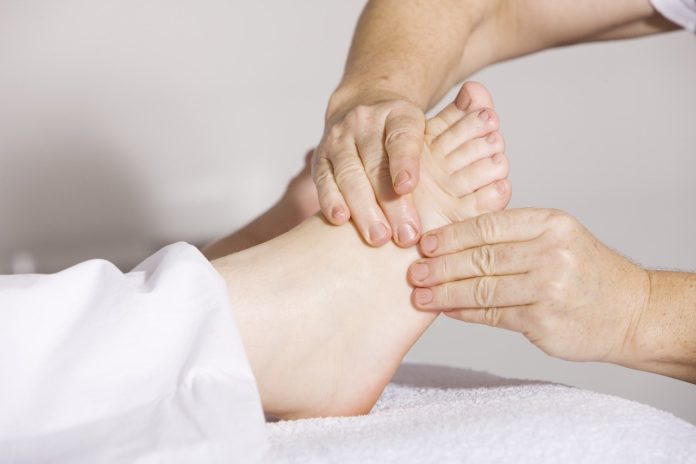One of the most common injuries that occur as a result of car accidents is whiplash. This injury is a fairly common occurrence and is often overlooked or mistreated due to a lack of knowledge about the condition. It may take a little time to recover, but you can effectively treat this particular injury with consistent care. Even though it is mild in nature; however, it can worsen if not looked at immediately. Let’s get into what whiplash is and how accident injuries doctors treat it.
What is Whiplash?
Doctors also term whiplash as a neck sprain or a strain. This demanding injury usually occurs when a car is hit in the rear, causing the head to snap back and forth. Physical violence, sports accidents, or amusement park rides may all cause it too. The movement resembles the tip of a whip. Whiplash leads to the damage of the spine’s soft tissues such as ligaments, tendons, and discs. It could take days, months, or even years for you to recover. Whiplash is two injuries in one.
- The first is a jerking neck movement. It causes hyperextension, which is an extra action that opens a joint.
- Hyperflexion is the other movement as it is the reversal of the motion that occurs immediately after.
There is a risk of injury from either of these two injuries. It is extremely frequent for this to happen if your unrestrained head and neck fall backward. These may be the tissues in your neck, including the discs between your vertebrae, ligaments, muscles, and nerves.
What Are The Symptoms Of Whiplash?
You may be thinking, what does whiplash feel like? The symptoms usually occur within 24 hours of the whiplash-causing event. They may appear after a few days in some cases. Here are some of its symptoms that can help you diagnose this injury and then get chiropractic treatment to recover. If you experience any of the following symptoms, contact your doctor right away.
- Tightness in your neck, pain, and a reduced range of motion. The muscles may be stiff or knotted
- When moving your head to look over each shoulder, you might experience pain or stiffness
- Sleeping problems
- Memory and attention issues irritability
- Severe pain when you move your head from side to side or backward and forward.
- Headaches radiating from the base of the skull to the forehead
- Numbness and weakness in your arms
- You may even experience nausea & vomiting
- You may have your vision blurred
- Your weariness and fatigue will be persistent
How to Treat Whiplash?
Now come to the main point of treating whiplash. The good news is that whiplash should heal on its own with time. There are numerous ways if you want to speed up this process. The main aims of whiplash care are to reduce discomfort and improve range of motion so that you can return to normal activities.
The severity of your whiplash injury will determine the medical options. Some patients only need over-the-counter drugs and in-home treatment. However, others will lean towards prescription medicine, advanced pain management, or physical therapy. With the right tools, treating whiplash can be a piece of cake.
- Prescription drugs: Your doctor can prescribe one or more medications to help alleviate the pain of whiplash, such as over-the-counter pain relievers for mild to moderate pain. Additionally, antidepressant medications can help people with mild to extreme whiplash pain relieve nerve pain.
- Heat or ice: Applying ice to the neck in the first few days after a whiplash injury will help relieve pain and swelling. Ice or cold packs will temporarily close small blood vessels and prevent swelling from worsening during this time window. After that, you should apply ice or heat alternately for a few days after the injury.
- Stretching your neck: Gentle movements will help you heal faster by easing stiffness. Your doctor or physical therapist may advise to do any of these on your own. When it comes to neck stretches, rotate your neck in both directions, tilt your head side to side, bend neck toward your chest, and roll shoulders to relieve pain. If a particular motion or activity aggravates your neck pain, avoid or limit it until your neck has had more time to heal.
- Rest: You should try not to engage in any activities that aggravate the pain. You can do usual activities if they do not hurt your neck or put it at risk for more stress or injury. Allow yourself a few days to relax. Try not to lift, sports, or other activities that might strain your neck. While it’s ideal to stay active as much as possible during the first few days, it’s also prudent to ease up.
- Acupuncture: It is a form of practice that uses needles to treat your injury. This process includes inserting thin needles into different strategic sections of the body depending on the condition. It has been reported to help a certain amount of people.
- Neck brace or soft foam collar: Use a neck brace if your doctor advises it. Doctors used to recommend soft foam collars (cervical collars) to keep the neck still after a whiplash injury, but they are not recommended for long-term use because they can weaken the muscles in your neck. We now know that excessive rest can stifle recovery. The cervical collar may still be beneficial, but only for a limited time.
- Therapy: Physical therapy may aid in the removal of a cervical collar. It helps in the strengthening of muscles and the reduction of painful movements. Occupational therapy is used to assist the patient in returning to work.
- Exercise: Try to keep up with your everyday routine. Stretch and strengthen the neck and back with exercises. Your doctor will be able to advise you on how to do so. It may cause some discomfort, but it will hasten your recovery.
- Muscles relaxants: Steroid or lidocaine injections can provide relief by placing medication directly where you feel hurt. In some cases, an injection is used to target a specific area. Some examples could be cervical epidural steroid injection to reduce nerve and tissue inflammation from a disc herniation, cervical facet joint injection to provide relief within the joint, and trigger point injection to help an irritated muscle bundle.
- Psychotherapy: It is a term that refers to the process. If a person has a psychological illness as a result of a whiplash injury, such as depression or post-traumatic stress disorder, a mental health professional may help them work through, understand, and resolve their problems. Other than this, accident injury doctors may administer medications as well.
- Chiropractic care: Massage and chiropractic treatments that constitute spinal manipulation and spinal decompression are examples of alternative therapies. They focus on the mind-body relationship and how it can help people feel better.
In addition to the above remedies, everything a person may do to maintain a healthier lifestyle would usually be helpful for neck pain. Such suggestions may include healthy eating, having enough rest; preferably with an ergonomic pillow, good posture, not smoking, and remaining active without causing more neck pain.
Final Thoughts
As previously mentioned, with the right equipment and chiropractic treatment, treating whiplash can be as easy as the ABCs. In no time will you be back with an active upper body and a forgotten whiplash.









